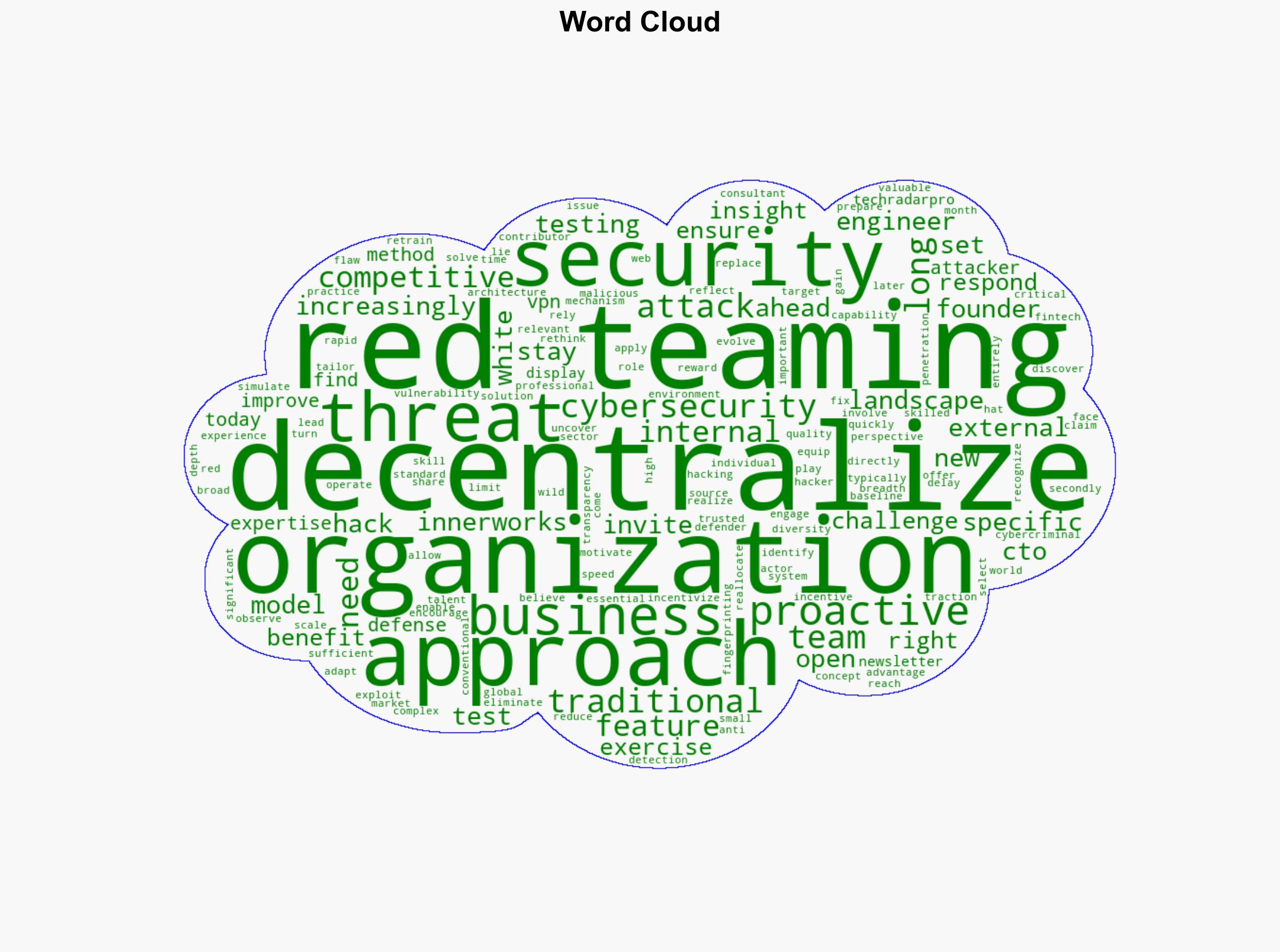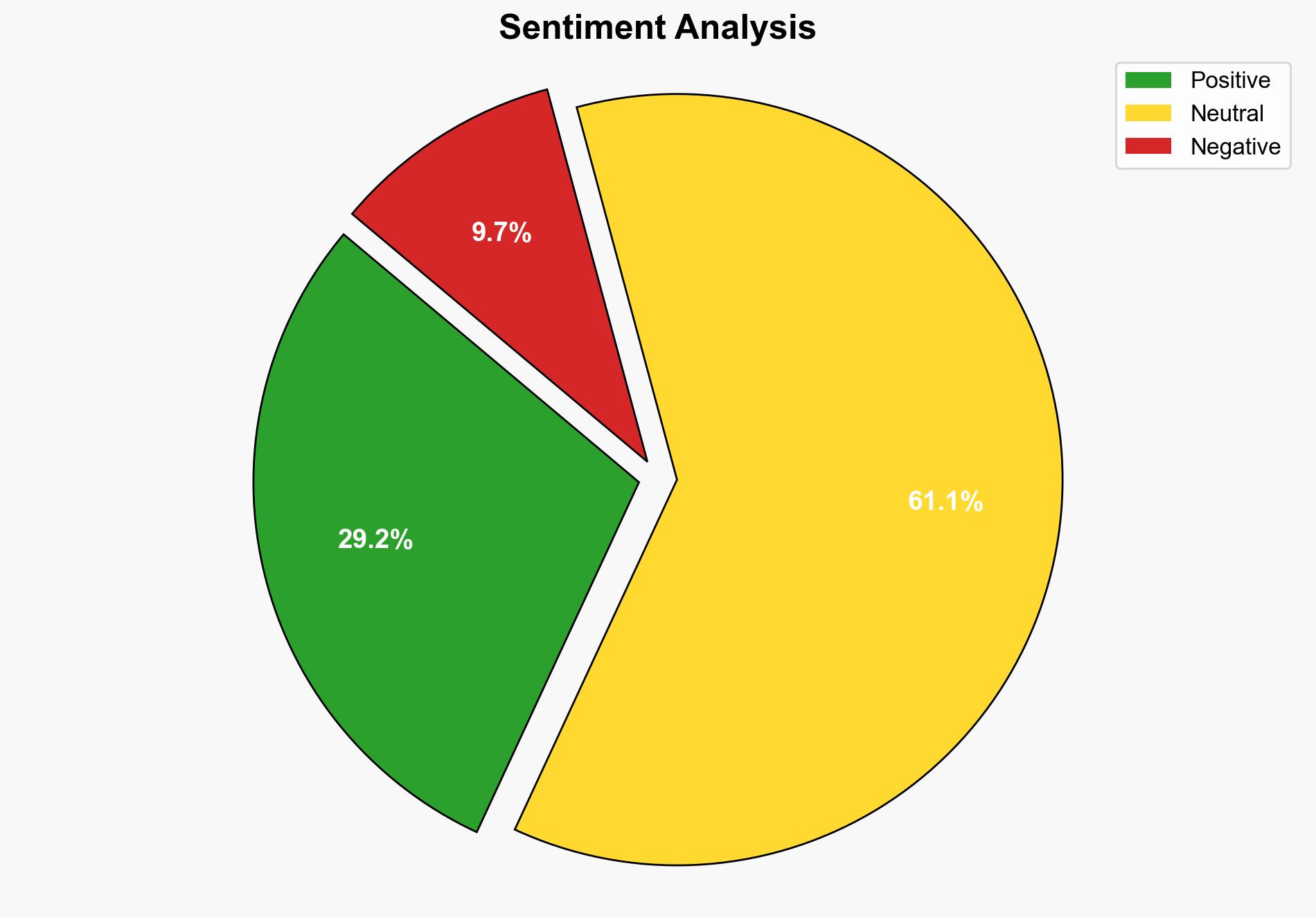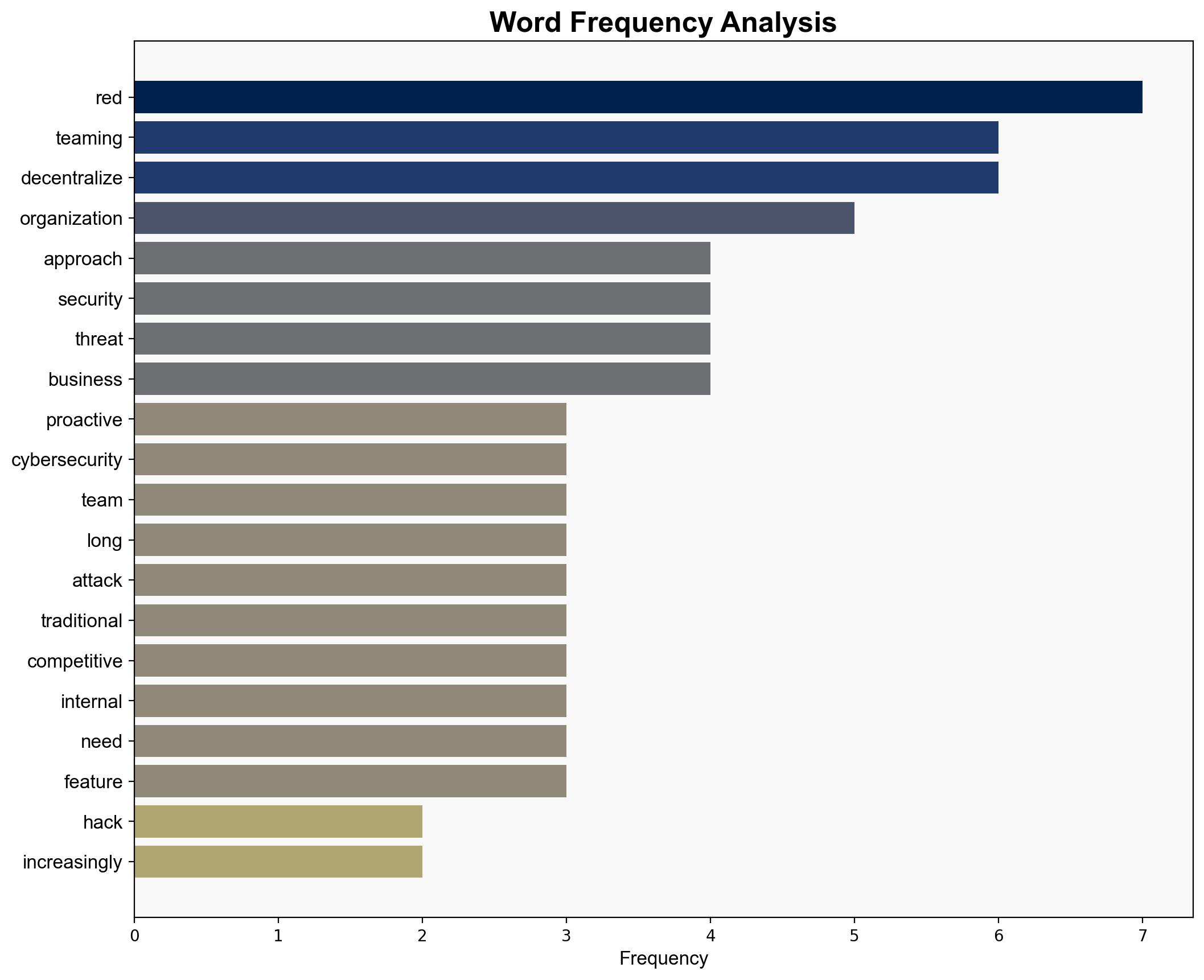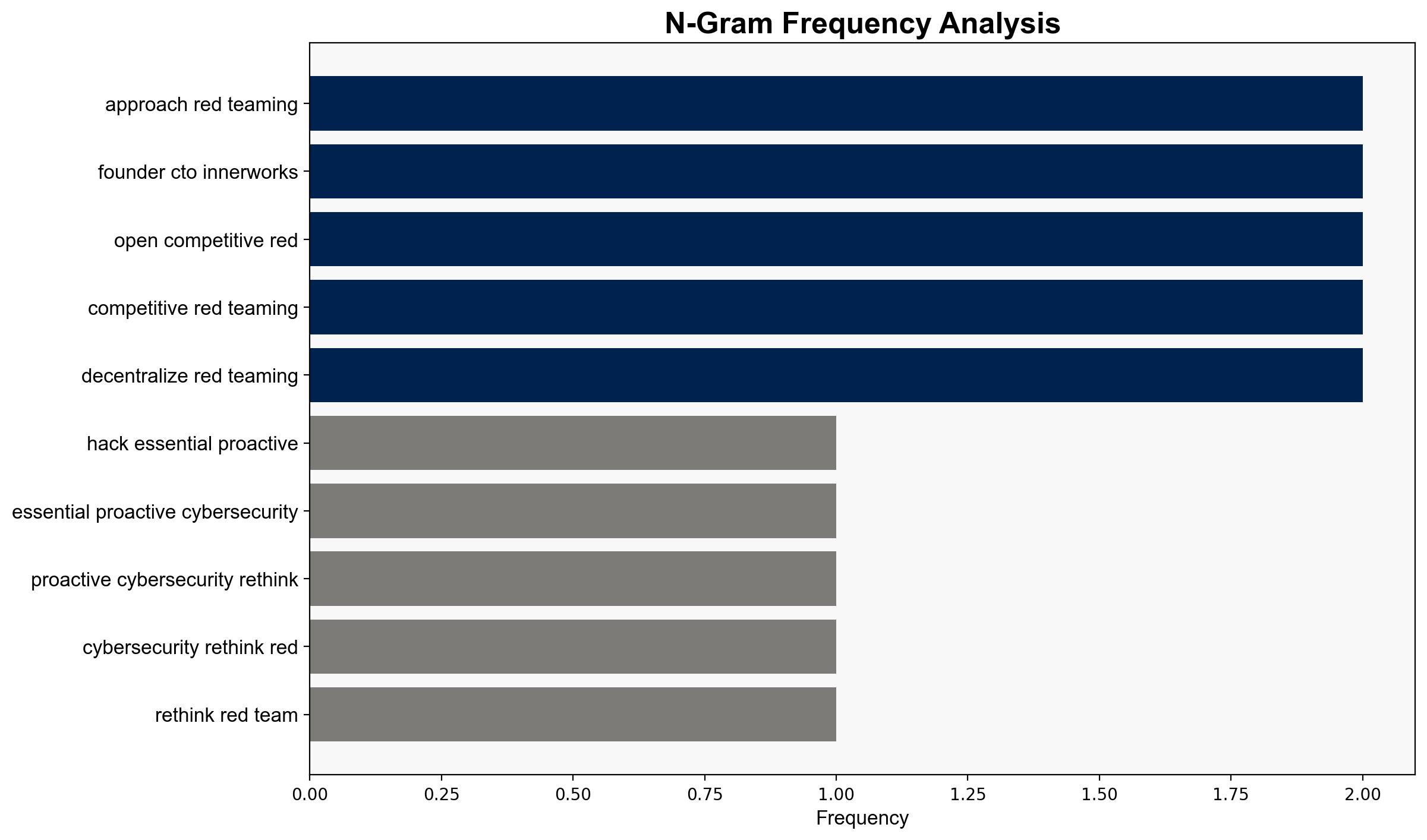Why hacking yourself first is essential for proactive cybersecurity – TechRadar
Published on: 2025-06-02
Intelligence Report: Why Hacking Yourself First is Essential for Proactive Cybersecurity – TechRadar
1. BLUF (Bottom Line Up Front)
The report underscores the critical importance of adopting proactive cybersecurity measures, specifically through decentralized red teaming. This approach involves engaging a diverse pool of external cybersecurity experts to simulate attacks and identify vulnerabilities, thereby enhancing an organization’s defensive posture. Key recommendations include integrating decentralized red teaming into standard security practices to anticipate and mitigate emerging threats effectively.
2. Detailed Analysis
The following structured analytic techniques have been applied to ensure methodological consistency:
Adversarial Threat Simulation
By simulating the actions of cyber adversaries, organizations can identify potential vulnerabilities and develop strategies to enhance their resilience against attacks.
Indicators Development
Establishing a system for detecting and monitoring anomalies helps in early threat detection, allowing for timely interventions.
Bayesian Scenario Modeling
This technique uses probabilistic inference to quantify uncertainties and predict potential cyberattack pathways, aiding in strategic planning and risk management.
3. Implications and Strategic Risks
The shift towards decentralized red teaming reflects a broader trend in cybersecurity where traditional methods are increasingly insufficient against sophisticated threats. This approach addresses systemic vulnerabilities by leveraging global expertise, but it also introduces risks related to data privacy and control over external contributors. Organizations must balance these risks with the benefits of enhanced threat detection and response capabilities.
4. Recommendations and Outlook
- Integrate decentralized red teaming into regular security assessments to ensure comprehensive threat coverage.
- Develop robust incentive mechanisms to attract top cybersecurity talent globally.
- Scenario-Based Projections:
- Best Case: Organizations achieve heightened security resilience, significantly reducing successful cyberattacks.
- Worst Case: Mismanagement of external teams leads to data breaches or loss of sensitive information.
- Most Likely: Gradual improvement in cybersecurity posture with periodic adjustments to address emerging threats.
5. Key Individuals and Entities
The report references the founder and CTO of Innerworks, who advocates for the adoption of open competitive red teaming models.
6. Thematic Tags
national security threats, cybersecurity, proactive defense, decentralized red teaming




